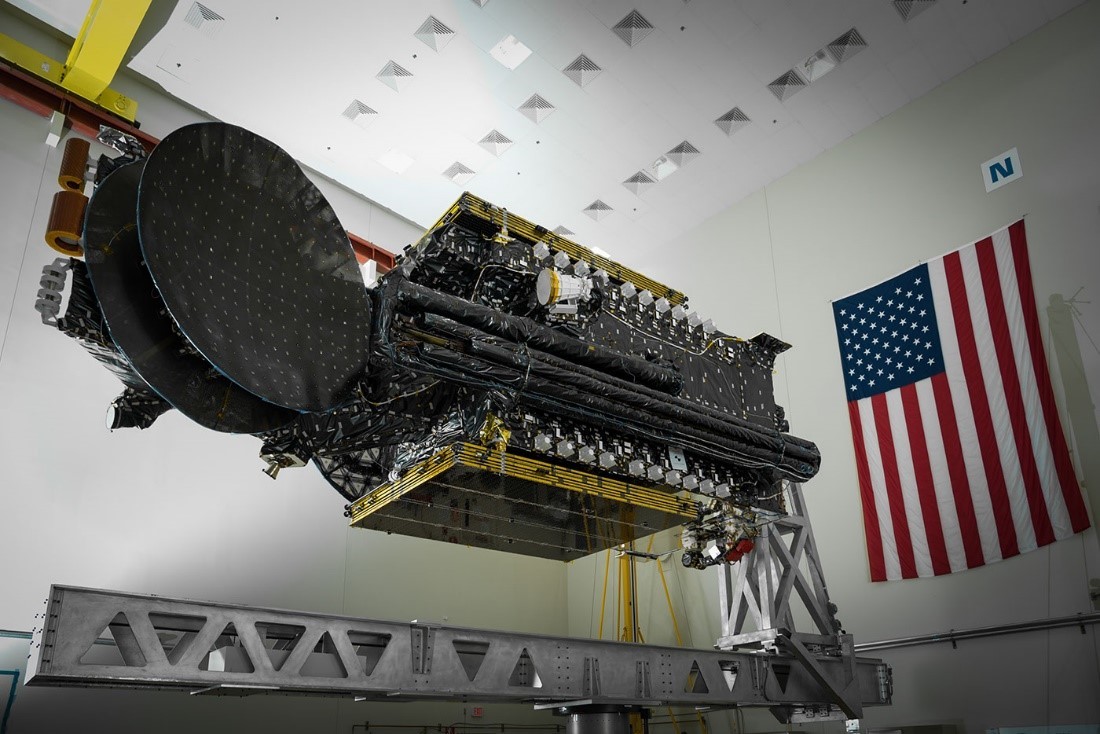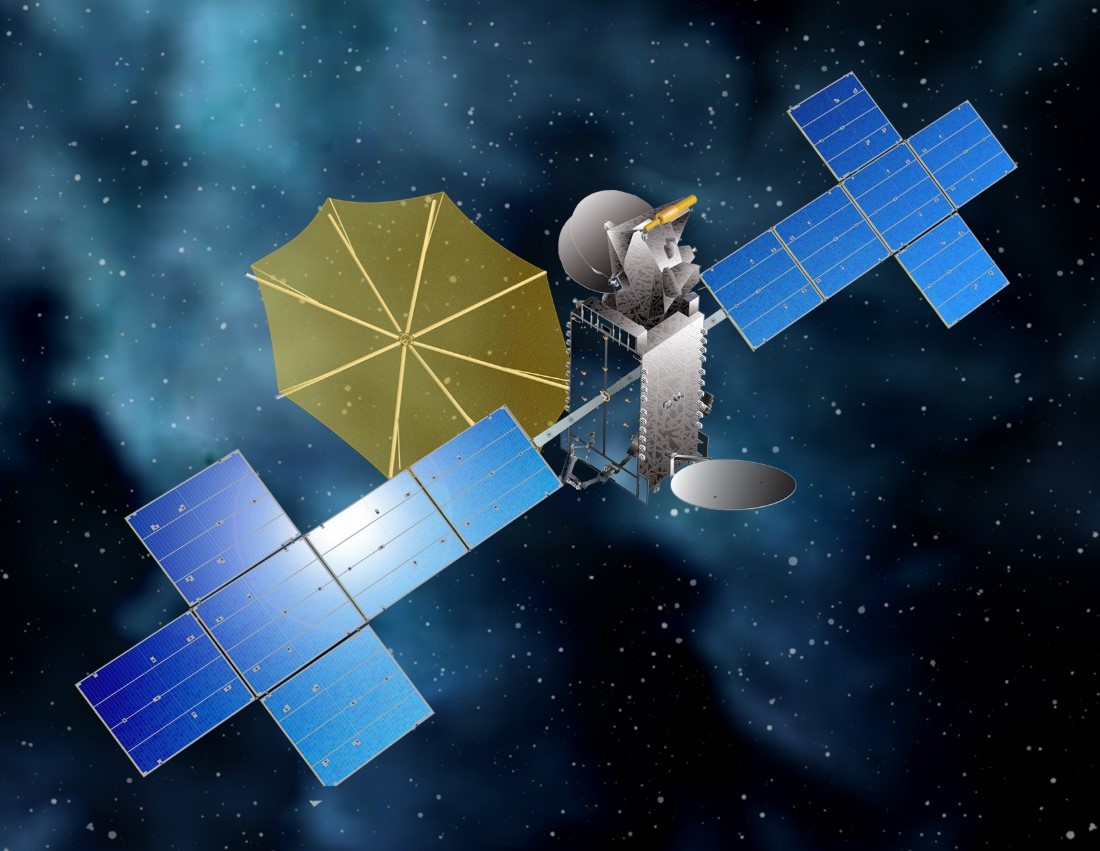SpaceX to launch new Sirius XM satellite from Florida today. How to watch it live.
Liftoff is at 12:55 a.m. EST (1755 GMT).
Update for Dec. 13, 11:13 a.m. EST: SpaceX is now targeting the launch of the Sirius XM SXM-7 satellite for 12:30 p.m. EST (1730 GMT) due to launch and rocket recovery weather. Weather forecasts predict an 80% chance of good launch weather.
CAPE CANAVERAL, Fla. — SpaceX is preparing to launch its 25th rocket of the year today (Dec. 11) as its workhorse Falcon 9 carries a satellite into space for Sirius XM and you can watch the action live online.
A two-stage Falcon 9 rocket flight is scheduled to take off from Space Launch Complex 40 at Cape Canaveral Space Force Station here in Florida. Liftoff is expected during a two-hour window that opens at 11:21 a.m. EST (1621 GMT).
Perched atop the 230-foot-tall (70m) launcher is the high-powered satellite Sirius XM-7 (SXM-7) built by Maxar technologies. It's one of two satellites that will be launched by SpaceX as part of an effort to replace outdated Sirius XM satellites currently on orbit.
You can watch the launch action live here and on the Space.com homepage, courtesy of SpaceX, or you can watch directly from SpaceX here about 15 minutes before liftoff.
Related: See the evolution of SpaceX's rockets in pictures
SpaceX has already had a banner year as the private spaceflight company has now launched two different astronaut missions to the International Space Station in the past six months, marking the first time a commercial company has done so.
Get the Space.com Newsletter
Breaking space news, the latest updates on rocket launches, skywatching events and more!
The company is also celebrating its busiest launch year to date, with a record 24 flights and more launches still to come. This flight will mark SpaceX's 25th launch of 2020, smashing the previous record of 18 set in 2018.
Following liftoff on Friday, the rocket's first stage is expected to land on SpaceX’s drone ship, "Just Read the Instructions" which is waiting out in the Atlantic. If successful, it will mark the 69th recovery of a first stage booster for the California-based rocket manufacturer.
The rocket featured in Friday’s launch will be another record-setting booster. Known as B1051, this flight proven booster will embark on its seventh flight — the second of SpaceX's fleet to do so. The first, B1049, ferried a batch of 60 Starlink satellites into orbit on Nov. 24, before touching down on the company’s other drone ship, “Of Course I Still Love You."
To date, B1051 has carried an uncrewed Crew Dragon spacecraft to the International Space Station as part of a 2019 flight test, followed by a trio of Earth-observing satellites for Canada as well as four different Starlink missions in 2020. For it's 7th flight, it will carry a 15,432-lb. (7,000-kg) satellite into orbit for Sirius XM. The satellite will beam down more than 8,000 watts of content to Sirius subscribers across the U.S., Canada and the Caribbean.

Currently, weather is 80% go for the launch opportunity on Friday, with the only weather concerns being the potential for cumulus clouds over the launch site. There is a backup launch time on Saturday if need be. However, the launch is dependent upon ULA’s Delta IV Heavy getting off the ground as planned on Thursday.
If everything goes as planned, this will mark the second launch in two days at the Cape and the third from Florida this week. On Sunday (Dec. 6), SpaceX launched an upgraded cargo Dragon spacecraft for NASA, carrying 6,400 lbs. (2,902 kg) of research and supplies to the International Space Station.
This launch will also mark the 30th rocket to blast off from Florida's space coast this year.
It’s payload, the SXM-7 satellite is based on Maxar Technologies' SSL-1300 satellite bus. It's adorned with two large solar arrays as well as batteries for on-orbit storage. SXM-7 will operate in the S-band spectrum, between 2.32 GHz and 2.345 GHz and is part of a pair that SpaceX is launching for Sirius XM. The other, SXM-8, is set to launch next year. Each satellite has an operational lifetime of 15 years, and will replace two aging satellites already on orbit.

SpaceX is expected to continue its tradition of recovering the Falcon 9's payload fairing, or nose cone, on Sunday's flight. The company has two net-equipped boats — called GO Ms. Tree and GO Ms. Chief — that it uses to snag the fairings as they fall back to Earth in two pieces.
Each piece of the clamshell-like hardware, which cost approximately $6 million combined, is outfitted with software that navigates it to the recovery zone, and a parachute system that lets them gently land in the ocean or the outstretched net of GO Ms. Tree and GO Ms. Chief.
The boats are also able to scoop the fairings up out of the water as making a midair catch is tricky and dependent upon several factors, like weather and winds. For this mission, GO Ms. Tree will be on her own as Ms. Chief remains parked in Port Canaveral.
The mission also marks the first time that SpaceX has flown a used fairing on a non-Starlink mission. One piece of the vehicle's protective shroud flew as part of the Anasis-II mission which launched a communications satellite for South Korea's military in July.
Follow Amy Thompson on Twitter @astrogingersnap. Follow us on Twitter @Spacedotcom or Facebook.
Join our Space Forums to keep talking space on the latest missions, night sky and more! And if you have a news tip, correction or comment, let us know at: community@space.com.

Amy Thompson is a Florida-based space and science journalist, who joined Space.com as a contributing writer in 2015. She's passionate about all things space and is a huge science and science-fiction geek. Star Wars is her favorite fandom, with that sassy little droid, R2D2 being her favorite. She studied science at the University of Florida, earning a degree in microbiology. Her work has also been published in Newsweek, VICE, Smithsonian, and many more. Now she chases rockets, writing about launches, commercial space, space station science, and everything in between.









